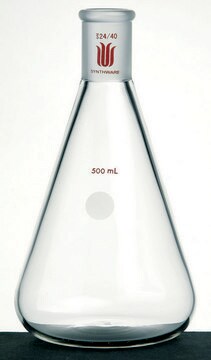일반 설명
We are committed to bringing you greener alternative products, which adhere to one or more of The 12 Principles of Green Chemistry.This antibody is Preservative-free, produced without the harm or sacrifice of animals and exceptionally stable to allow for ambient shipping and storage if needed and thus aligns with "Waste Prevention", "Designing Safer Chemicals" and "Design for Energy Efficiency".
Click here for more information.
ZooMAb® antibodies represent an entirely new generation of recombinant monoclonal antibodies.
Each ZooMAb® antibody is manufactured using our proprietary recombinant expression system, purified to homogeneity, and precisely dispensed to produce robust and highly reproducible lot-to-lot consistency. Only top-performing clones are released for use by researchers. Each antibody is validated for high specificity and affinity across multiple applications, including its most commonly used application. ZooMAb® antibodies are reliably available and ready to ship when you need them.
특이성
Clone 1L13 is a ZooMAb® Rabbit recombinant monoclonal antibody that specifically detects JAK2. It targets an epitope within 20 amino acids from the C-terminal region.
면역원
KLH-conjugated linear peptide corresponding to 20 amino acids from the C-terminal region of human JAK2.
애플리케이션
Quality Control Testing
Evaluated by Western Blotting in K562 cell lysate.
Western Blotting Analysis: A 1:1,000 dilution of this antibody detected JAK2 in K562 cell lysate.
Tested Applications
Western Blotting Analysis: A 1:1,000 dilution from a representative lot detected JAK2 in lysates from TF-1 cells and human liver tissue.
Affinity Binding Assay: A representative lot of this antibody bound JAK2 with a KD of 6.6 x 10-8 in an affinity binding assay.
Immunohistochemistry (Paraffin) Analysis: A 1:100 dilution from a representative lot detected JAK2 in human tonsil tissue sections.
Note: Actual optimal working dilutions must be determined by end user as specimens, and experimental conditions may vary with the end user
표적 설명
Tyrosine-protein kinase JAK2 (UniProt: O60674; also known as EC:2.7.10.2, Janus kinase 2, JAK-2) is encoded by the JAK2 gene (Gene ID: 3717) in human. The Janus kinase (JAK)/signal transducers and activators of transcription (STAT) signaling pathway play an important role in cell proliferation, cell differentiation, cell migration, and cell death. It is the principal signaling mechanism for a variety of cytokines and growth factors. JAK/STAT signaling is also involved in hematopoietic development. Constitutive activation or dysregulation of JAK/STAT signaling can result in inflammatory disease, erythrocytosis, gigantism, and leukemia. In mammals, the JAK family is composed of four members: JAK1, JAK2, JAK 3, and Tyk2. JAK2 is a non-receptor tyrosine kinase that mediates essential signaling events in both innate and adaptive immunity. It contains two protein kinase domains (aa 545-809 and 849-1124). Its catalytic activity is assigned to the second kinase domain. In the cytoplasm, it plays a pivotal role in signal transduction via its association with type I receptors such as growth hormone (GHR), prolactin (PRLR), leptin (LEPR), erythropoietin (EPOR), thrombopoietin (THPO); or type II receptors including IFN-a, IFN-b, IFN-g, and multiple interleukins. Following ligand-binding to cell surface receptors, it phosphorylates specific tyrosine residues on the cytoplasmic tails of the receptor, creating docking sites for STATs proteins. Subsequently, it phosphorylates the STATs proteins recruited to the receptor. Phosphorylated STATs then form homodimer or heterodimers and translocate to the nucleus to activate gene transcription. In the nucleus, JAK2 regulates transcription by specifically phosphorylating Tyr-41 of histone H3 (H3Y41ph), a specific tag that promotes exclusion of CBX5 from chromatin. This ZooMAb® recombinant monoclonal antibody, generated by our propriety technology, offers significantly enhanced specificity, affinity, reproducibility, and stability over conventional monoclonals. (Ref.: Hubbard, SR. (2018). Front. Endocrinol. 8; 361; Dawson, MA., et al. (2012). Cell Rep. 2(3); 470-477; Sakatsume, M., et al. (1995). J. Biol. Chem. 270(29); 17528-17534).
물리적 형태
Purified recombinant rabbit monoclonal antibody IgG, lyophilized in PBS, 5% Trehalose, normal appearance a coarse or translucent resin. The PBS/trehalose components in the ZooMAb formulation can have the appearance of a semi-solid (bead like gel) after lyophilization. This is a normal phenomenon. Please follow the recommended reconstitution procedure in the data sheet to dissolve the semi-solid, bead-like, gel-appearing material. The resulting antibody solution is completely stable and functional as proven by full functional testing. Contains no biocide or preservatives, such as azide, or any animal by-products. Larger pack sizes provided as multiples of 25 μL.
재구성
300 μg/mL after reconstitution at 25 μL per vial. Please refer to guidance on suggested starting dilutions and/or titers per application and sample type.
저장 및 안정성
Recommend storage of lyophilized product at 2-8°C; Before reconstitution, micro-centrifuge vials briefly to spin down material to bottom of the vial; Reconstitute each vial by adding 25 μL of filtered lab grade water or PBS; Reconstituted antibodies can be stored at 2-8°C, or -20°C for long term storage. Avoid repeated freeze-thaws.
법적 정보
ZooMAb is a registered trademark of Merck KGaA, Darmstadt, Germany
면책조항
Unless otherwise stated in our catalog or other company documentation accompanying the product(s), our products are intended for research use only and are not to be used for any other purpose, which includes but is not limited to, unauthorized commercial uses, in vitro diagnostic uses, ex vivo or in vivo therapeutic uses or any type of consumption or application to humans or animals.






